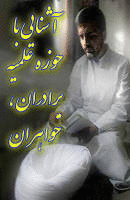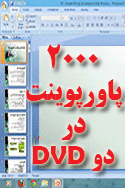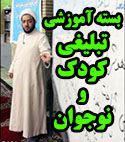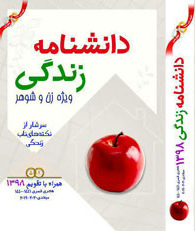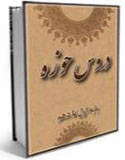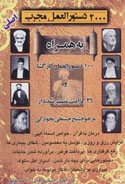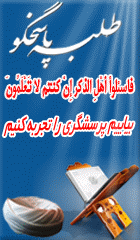Who founded Kaaba and what aspect of its changes were historical?
Question:
Who founded Kaaba and what aspect of its changes were historical?
Answer:
It was repeatedly transmitted that Abraham (a`) was the founder of Kaabah. Those residing in the vicinity of Kaaba were Ishmael, the son of Abraham, and Jorhom clan. Jorhom was a Yemenite clan that had accommodated in Mecca. Ishmael, the son of Abraham, chose his wife from among them and thus became relatives with one another. The clan then deviated from divine path within the holy land and God the almighty annihilated them all.
Kaaba was almost a four-sided building with four angles each pointing to one of four directions so to resist against violent tempests and hurricanes that are bent asunder hitting Kaaba.
The building of Kaaba retained its early features which Abraham had molded before Amalek and Bani Jorham reconstruct it as related from the Commander of the Faithful.
Qusai ibn Kilab, the Prophet`s ancestor took on the trusteeship of Kaaba in second century before migration, and demolished it to fortify its structure. He piled its roof with Indian palm dates` woods and branches and built Darannadwah beside it. The house- Darannadwah- was governing center and its consultation abode. He then allocated lands on each direction of Kaaba among Mecca tribes to build their houses.
Flood destroyed Kaaba five years before the appointment of the Prophet. The tribes helped to build it anew. The bricklayer was a Roman man whom an Egyptian carpenter was helping. Once they wanted to place Hajarulaswad disagreement as to which tribe is supposed to win the honor of placing Hajarulaswad occurred. They eventually decided to ask Mohammad who was hen thirty five and all the people of Mecca believed in his wisdom to be the arbiter. The Prophet demanded a cloak to put it on and then asked the tribes to clutch the cloak. He held the stone himself when they reached the installation site in eastern side of the Kaaba and placed it in its place. They decreased the site`s height as they ran short of budget in building Kaaba, which is still as tall as it was at the time. Some of the older site was left outside the boundary of new shrine as they decreased the building`s height.
It maintained its status until Abdullah, the son of Zubair, during the reign of Yazid, the son of Moaviyah, conquered Mecca. Hosain, the commander appointed by Yazid, fought Abdullah and catapulted Kaaba, which destroyed it and set fire on its cloth and woods on roof. In the midst of the battle, Yazid died and Hosain quit fighting. Abdullah, the son of Zubair, decided to destroy Kaaba and reconstruct it. In order to do this, he imported clean plaster from Yemen and built Kaaba by it and included Ishmael Stone inside its territory, set its door even with the ground, and devised another door across from this door so that people enter it from a door and leave it from another. He set ıts heıght as twenty seven gazes each of whıch ıs almost equal to 90 centımeters. When they were done with building Kaaba, he ordered to splash fragrances of musk and others inside the Holy Kaaba and drape it with silk. They finished Kaaba on Rajab 17th of 64 according to lunar calander.
After Abdul Malek Marvan took the throne, he ordered Hajjaj his troop`s commander to fight Abdullah, the son of Zubair, He defeated the son of Zubair and killed him. Then, he entered Holy Kaaba and let Maran know of the distortions effected by Abdullah in Kaaba. Marvan ordered to retrieve Kaaba to its early condition.
Hajjaj, Marvan`s commander, destructed six gazes and a span in its northern side, rebuilt the wall on the foundations set bu Quraysh. He then moved up the door above the ground and blocked the western door and paved its floor with marbles and limestone.
When Ottomon emperor Sultan Suleiman took the throne in 960 based on lunar calander changed theKaaba`s roof. In 1021 Sultan Ahmad repaired Kaaba. In 1039 a huge flood happened and destroyed Kaaba`s northern, eastern and western walls. Sultan Murad, the fourth, ordered to reconstruct the damages. Since then, Kaaba has not changed.
Refrence:
Source: Arfa`, Seyed Kazim, “200porsesh ve 200 pasokh”, Vol.1, Tehran, Feid Kashani publications, second edition, 1386
Translation by: AhlulBayt News Agency (a.s) (Abna.ir)
مطالب مشابه با این موضوع:
وبگــــــــــردی طلبۀ پاسخگو
- فایل اعمال و رفتار های خلاف قانون جناب آقای حسن روحانی
- در کنج خانه طلبهها چه میگذرد؟
- سکوت چند ساله مسئولان حوزه در قبال حملات وحشیانه به طلاب!
- می گویند که مملکت مملکت آخوندهاست!!
- یک ماجرای تلخ که خانم ها با تأمل بیشتر بخونند
- جریان های تکفیری موجود در عراق و نحوه شکل گیری آنها
- سیر تکاملی تفکر سلفیه چگونه بوده است؟
- بداء در قرآن و حدیث چگونه مطرح شده است؟
- پیامبر (ص) با مخالفین خود چگونه بر خورد می کرد؟
- سبک زندگی حضرت زهرا سلام الله علیها
- ملاک کرامت و شرافت افراد، انسانیت است یا جنسیت؟
- رنگ و پوشش های رنگی در اسلام
- حجاب، زنان را افسرده میکند و مانع پیشرفت اجتماعی آنهاست!!!
- علوم لدنی معصومین
- مگر ولی فقیه معصوم است که ولایت مطلقه دارد؟
- اگر خدا ازعاقبت ما اطلاع دارد قیامت برای چیست؟
- آیا بجای نماز خوندن، پیانو یا سه تار بزنم؟
- چرا مراسم عزاداري امام حسين(ع) پيش از شهادت ايشان صورت ميگيرد؟
- چرا امام حسين(ع) در كربلا براي رفع تشنگي از خداوند طلب باران نكرد؟
دانــــــلود های مفیـــــــــــــــــــد
- دانلود پاورپوینت شناخت وهابیت و صهیونیسم و ارتباط با همدیگر
- دانلود دو پاورپوینت اجرای عید غدیر خم
- دانلود پاورپوینت احتجاج اميرمؤمنان (ع) به غدير
- پژوهشی در کلام و پیام مقام معظم رهبری پیرامون ماه رمضان
- خطبه شعبانیه و خطبه امیرالمومنین(علیه السلام) پیرامون روزه و ماه رمضان
- دانلود پاورپوینت و pdf تفاوت های زن و مرد
- دانلود جزوه ساعات سعد و نحس(زمان نوشتن دعا)
- تقویم مذهبی شمیم یار 96 مخصوص کامپیوتر
- دانلود نرم افزار «شیعه شناسی»
- دانلود پاورپوینت ساختار خانواده و مسایل آن
- دانلود کتاب دایره المعارف جنسی
- دانلود نکات جذاب دوران عقد
- دانلود کتاب درمان سرد مزاجی و بی میلی جنسی بانوان
- دانلود کتاب حسادت کودکان
- دانلود کتاب درمان خستگی وناتوانی جنسی
- دانلود پاور پوینت اسیب های ازدواج وخانواده
- دانلود پاورپوینت هشت گام برای تحقق رویا به واقعیت
- دانلود پاورپوینت تقویت اراده
- دانلود پاورپوینت موفقیت وروشهای رسیدن به ان
- دانلود پاورپوینت هنر رفتار با افراد دشوار
- دانلود پاورپوینت جملات جالب وجذاب روحیه بخش بزرگان
- دانلود پاورپوینت راههای مقابله ودرمان استرس
- دانلود پاورپوینت نیازهای اساسی کودکان
منبــــرهای مکــــــــــــــــــتوب
- منبر مکتوب: روز عرفه و فرصت ها
- منبر مکتوب: سبک زندگی امام باقر علیه السلام
- منبر مکتوب: سه نیاز مومن (امام جواد علیه السلام)
- سخنرانی سلسله ای و چند جلسه ای مناسبت ماه رمضان
- دانلود 30 جلسه سخنرانی ماه مبارک با موضوع تنها مسیر
- موضوعات پیشنهادی سخنرانی برای محرم
- فضائل حضرت قمر بنی هاشم علیه السلام
- برکات وجود ابا عبدالله علیه السلام بر عالم
- بررسی بُعد اخلاقی،عبادی و عرفانی عاشورا
- آخرين وصيت امام حسين عليه السلام
- اولین علت رویاروی در کربلا؛ دوری از یاد خدا
- هميشه حزن؟ شادي چرا نه؟ - شب دهم محرم
- چرا نفرين ؟ - شب نهم محرم
- نماز ظهر عاشورا - شب هشتم محرم
- فلسفه عزاداری - شب هفتم محرم
- دفاع از دین - شب ششم محرم
- فلسفه حضور خانواده سيد الشهداء - شب پنجم محرم
- علم امام علیه السلام به شهادت - شب چهارم محرم
- فقدان شرایط امر به معروف و نهی از منکر- شب سوم محرم
مناظرات طلبه پاسخگو
جدیدترین های زبان انگلیسی
- Islam and Its Social System
- Duties of Man Towards the People
- Islam Various Systems
- Attributes of The Real Follower of Imams in Their Teachings
- Who is a Real Shia Muslim?
- RIGHTS OF SCHOLARS
- Islam Attacks Slavery 1
- The Advantages of Religion 2
- The Clearest Reason for Free Will
- Sheikh Zakzaky to be released on bail
- Brief History of Religions
- Is It Necessary For Man To Follow A Religion?
- The Advantages of Religion 1
- Who Is Almighty Allah?
- What are the differences between Shia and Sunni Muslims؟
- The Rights Islam Offers to Women
- How I find that Islam does not Oppress Women?
- URGENT MEDICAL TREATMENT FOR SHEIKH ZAKZAKY
- The motto of this year’s book fair is “Reading Is Ability”.
- Fundamental principles of Islam
بیشترین دانلود ها
- دانلود صوتي تکنیک های نزدیکی زن و شوهر (108050)
- دانلود رایگان کتاب خواص سوره های قرآن (54751)
- دانلود پاورپوینت بسیار مفید مهارت های زندگی (37418)
- دانلود پاورپوینت و pdf تفاوت های زن و مرد (33777)
- دانلود كتاب مسائل جنسي و زناشوئي در احاديث (33752)
- دانلود کتاب دایره المعارف جنسی (31803)
- دانلود پاورپوینت های آموزش پیش از ازدواج (30494)
- دانلود بسیار مفید پاورپوینت آئین همسرداری (29861)
- دانلود پاورپوینت آموزشی بررسی رابطه دختر و پسر (29515)
- دانلود 110جلد کتاب بحارالانوار علامه مجلسی ره (29463)
- دانلود كتاب دختران خوب به آسمان می روند دختران بد به همه جا (28453)
- دانلود کتاب آموزش جنسی آقایان (28244)
- دانلود كتاب فرق و مذاهب كلامي استاد رباني گلپايگاني (28195)
- دانلود کتاب درمان سرد مزاجی و بی میلی جنسی بانوان (27992)
- دانلود نکات جذاب دوران عقد (27533)
- دانلود نرم افزار «شیعه شناسی» (25838)
- دانلود کتاب درمان خستگی وناتوانی جنسی (25104)
- دانلود پاورپوینت تقویت اراده (23580)
جدیدترین مطالب سایت
- پاسخ به شبهات ولایت (4655) بازدید
- پاسخ به شبهات ولایت (4448) بازدید
- اذان در جامعه اسلامی نماد چیست ؟ و چرا فقط سه بار در روز تکرار می شود ؟ (3882) بازدید
- باتوجه به عادل بودن خداوند چرا بعضی از انسانها را ناقص الخلقه آفریده است ؟ (3956) بازدید
- ویژگی خاص قرآن چیست که کسی نمی تواند مانند آن را بیاورد ؟ (4169) بازدید
- با توجه به ترک خود ارضایی عوارض آن هنوز در من هست چگونه آن را برطرف کنم ؟ (5570) بازدید
- آیا بدن اخروی مانند بدن مادی است ؟چهره ی واقعی انسان در قیامت چگونه است ؟ (4969) بازدید
- آیا ادعای ملاقات امام زمان (عج) از جانب برخی افراد صحت دارد ؟ (4470) بازدید
- چرا به اصول و قواعد دین اسلام توجه نمی شود و پذیرش آن از سوی پیروان ادیان دیگر سخت است ؟ (4837) بازدید
- فلسفه وجود لباس روحانیت در عصر حاضر چیست ؟ (3524) بازدید
- آیا وظیفه یک روحانی تنها راهنمایی مردم و فعالیت و تدریس در حوزه هاست ؟ (2932) بازدید
- آیا نظریه تناسخ از دیدگاه اسلام پذیرفته شده است ؟ (5188) بازدید
- آیا توصیف بهشت و جهنم در قرآن تمثیل هایی برای درک بهتر آن جهان است ؟ (4806) بازدید
- با توجه به اینکه اسلام کاملترین دین هست چرا ما نسبت به کشور های غیر مسلمان عقب مانده تر هستیم ؟ (6694) بازدید
- نقش امام و رهبر در جامعه اسلامی چیست ؟ و اگر نباشد چه اتفاقی می افتد ؟ (4516) بازدید
پربازدیدترین های سایت
- زنی هستم که میخواهم به شوهرم خیانت کنم!!! (605266)
- آيا زن شوهر دار بخاطر رفع نیاز جنسی اش ميتواند صیغه شود؟ (500966)
- دوست دخترم حامله شده چکار کنم؟ (398565)
- میل جنسی زیادی دارم و به شدت داره منو عذاب می ده (340475)
- دیدن فیلم های مبتذل زن و شوهر برای تحریک شدن جنسی (217799)
- چگونه همسرمان را آماده آميزش جنسي كنم؟+18 (213110)
- حکم شرعی نزدیکی از پشت! (208013)
- خانم هایی که می خواهند طلبه شوند بخوانند!!! (205450)
- زنم رابطه جنسی برقرار نمیکند!!! (199651)
- از تجربه های تلخ و تکان دهنده دختران بخوانید شاید... (172380)
- گناه با محارم خود داشتم! (146291)
- رابطه جنسی دهانی حكم چيست؟ (130705)
- محرمات و مکروهات و مستحبات حائض+حکم ورد به امکان مقدسه (129479)
- به رابطه خانمم با خواهر زاده اش مشکوکم؟ (123103)
- سفارش اسلام در مورد آمیزش صحیح چیست؟ (99038)
- نام كتاب حضرت نوح و حضرت ابراهیم؟ (97027)
- با زنان چشم سبز ازدواج نکنیم؟ (94737)











